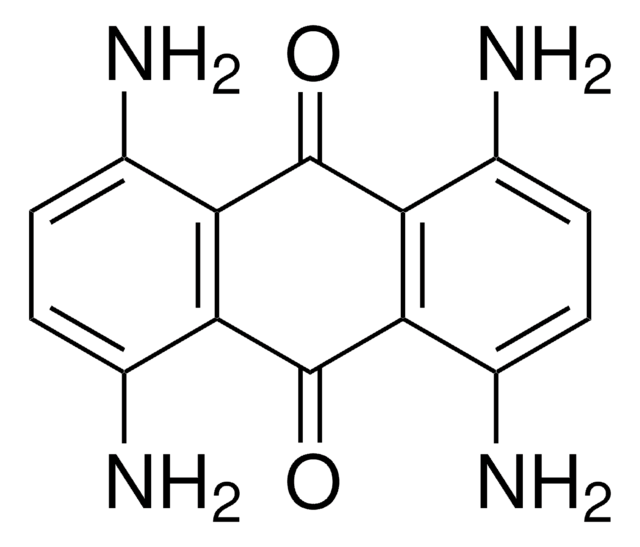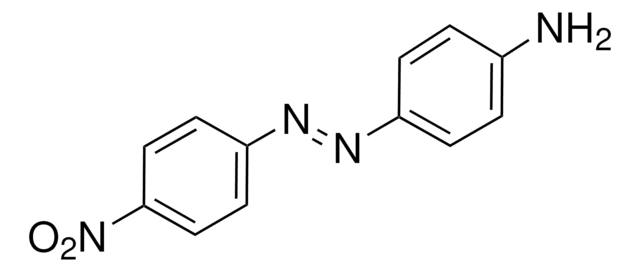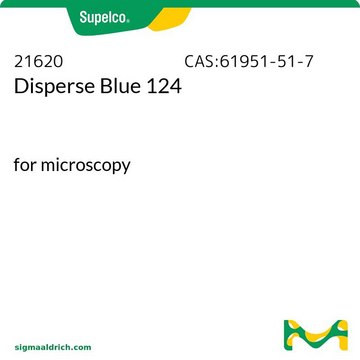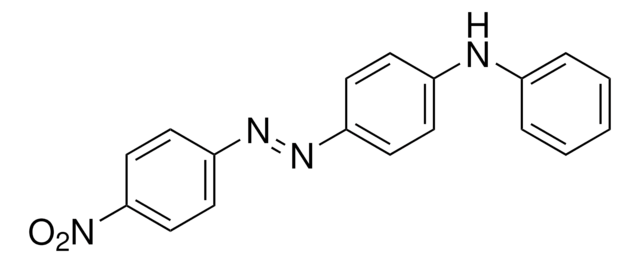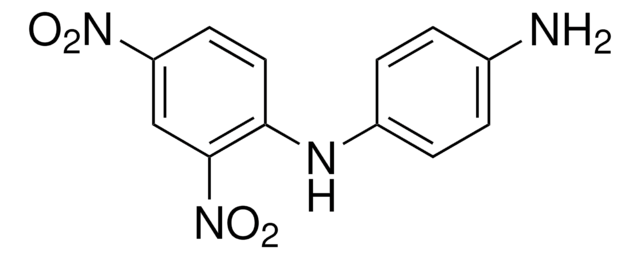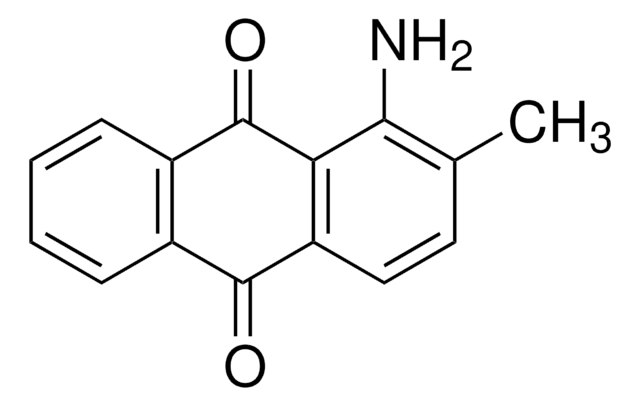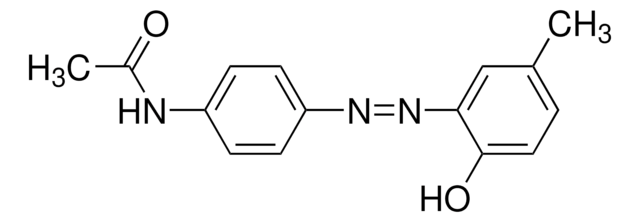所有图片(1)
About This Item
经验公式(希尔记法):
C17H15Cl2N5O2
CAS号:
分子量:
392.24
Beilstein:
6348868
EC 号:
MDL编号:
UNSPSC代码:
12171500
PubChem化学物质编号:
NACRES:
MA.02
推荐产品
等级
for microscopy
质量水平
表单
powder
ε (消光系数)
≥250 at 415-425 nm in methanol
应用
diagnostic assay manufacturing
hematology
histology
储存温度
room temp
SMILES字符串
CCN(CCC#N)c1ccc(cc1)\N=N\c2c(Cl)cc(cc2Cl)[N+]([O-])=O
InChI
1S/C17H15Cl2N5O2/c1-2-23(9-3-8-20)13-6-4-12(5-7-13)21-22-17-15(18)10-14(24(25)26)11-16(17)19/h4-7,10-11H,2-3,9H2,1H3/b22-21+
InChI key
KHZRTXVUEZJYNE-QURGRASLSA-N
正在寻找类似产品? 访问 产品对比指南
一般描述
Disperse Orange 37 is a textile dye allergens. It is a component of commercial dye formulation Dispersol Black Dye used in textile industry for dyeing synthetic fibers.
应用
Disperse Orange 37 may be used during an experimental study conducted to understand the mutagenic and carcinogenic potential of textile azo dye processing plant effluent, that is known to have an impact on drinking water source.
其他说明
用于分析纺织品中致敏染料的染料标准品
Patricia A Carneiro et al.
Journal of hazardous materials, 174(1-3), 694-699 (2009-10-27)
High performance liquid chromatography coupled to a diode array detector method was developed to detect disperse dyes in water samples over the range 0.50-35 ng, with detection limits of 0.09 ng, 0.84 ng and 0.08 ng, respectively, with good repeatability
Rodrigo Otávio Alves de Lima et al.
Mutation research, 626(1-2), 53-60 (2006-10-10)
Recently a textile azo dye processing plant effluent was identified as one of the sources of mutagenic activity detected in the Cristais River, a drinking water source in Brazil [G.A. Umbuzeiro, D.A. Roubicek, C.M. Rech, M.I.Z. Sato, L.D. Claxton, Investigating
K.L. Hatch
Textile Res., 54, 664-664 (1984)
K L Hatch et al.
Journal of the American Academy of Dermatology, 32(4), 631-639 (1995-04-01)
The literature concerning textile dye dermatitis published during the last decade was reviewed. Sixty-one cases of dye-allergic contact dermatitis in which the presentation or course of the dermatitis was unusual or the dye allergen was one not previously reported have
我们的科学家团队拥有各种研究领域经验,包括生命科学、材料科学、化学合成、色谱、分析及许多其他领域.
联系技术服务部门